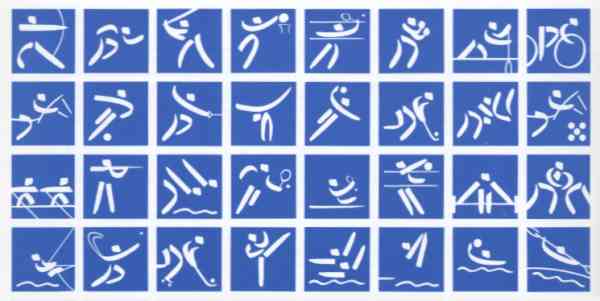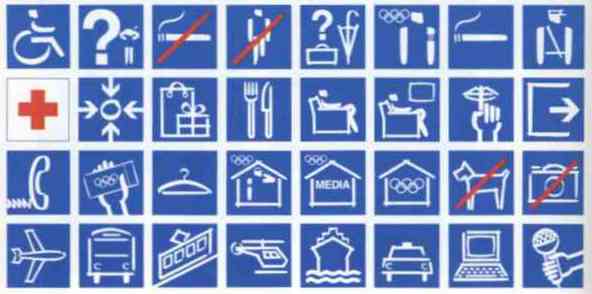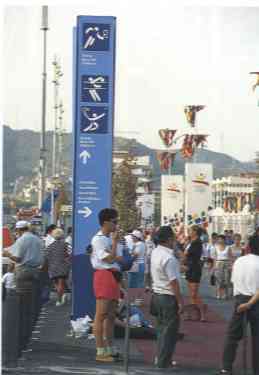Pictograms
| The pictograms 1992
Pictograms had been widely used since Munich
in 1972. The person in overall charge of the visual style of those Games
was the great designer Otl Aicher, under whose direction a series of sports
and services pictograms were created from a basic geometric formula. They
became so widespread as to be practically universal. At the Montreal Games
they were used without any changes, in Los Angeles and Seoul only slight
modifications were introduced. In Barcelona, though the Munich shapes were
still used as a starting point, the break in style was more audacious,
as the geometric formula was abandoned in favour of the characteristic
line of the emblem created by Josep. M. Trias and its representational
simplification of the human body in three parts (head, arms and legs) was
also adopted. 


Service pictograms The services pictograms were intended to guide
the public in the surroundings and the interior of the Olympic units, whether
competition venues, training facilities or service centres. In Barcelona
eighty-two were specially designed in the same graphic style as the sports
pictograms and five more were invented incorporating existing symbols for
public services and transport. 
© 1992 COOB'92, S.A., Plaça de la Font Màgica, s/n, 08038 Barcelona |